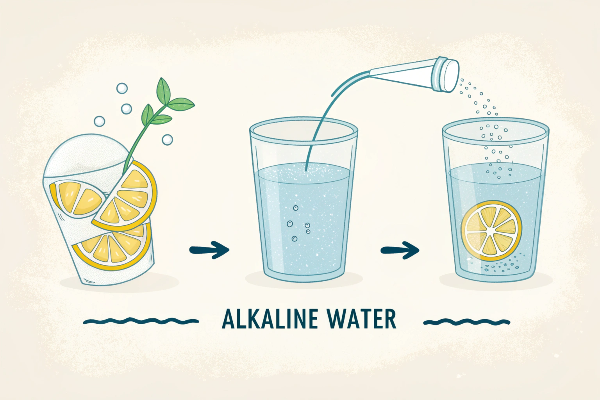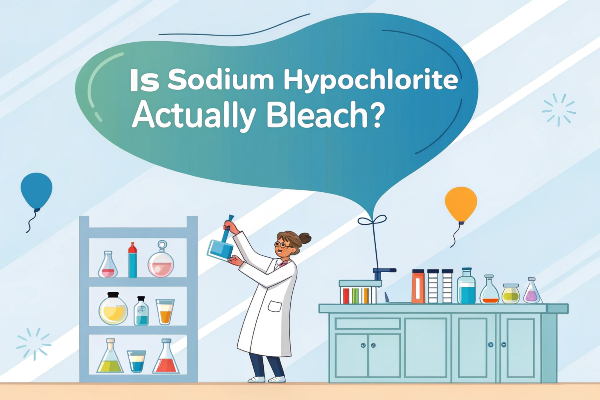Are you battling stubborn mould patches in your home? Does it feel like no matter how much you scrub, it just comes back? Many people reach for bleach, thinking it’s the ultimate solution.
Bleach can kill surface mould on hard, non-porous surfaces like tiles and sinks. But, it’s often ineffective on porous materials like wood or drywall because it doesn’t reach the mould roots. The water in bleach can even feed hidden mould.
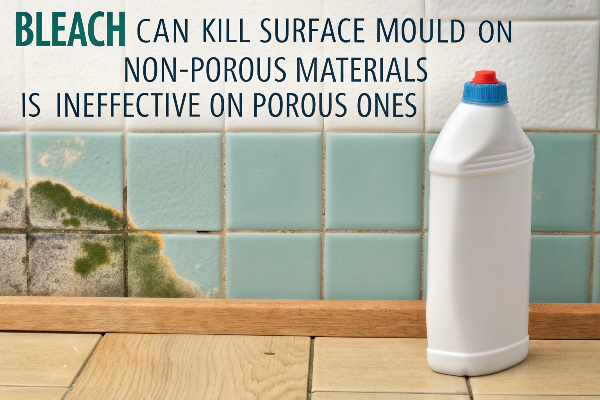
So, while bleach might seem like a quick fix, it doesn’t always solve the underlying problem. It often just removes the colour, making you think the mould is gone. Let’s dive deeper into why bleach isn’t always the best choice and explore some alternatives.
Why Should You Not Put Bleach on Mould?
Thinking bleach is your go-to mould destroyer? Using it might actually create more issues than it solves, especially long term.
You shouldn’t use bleach on mould, particularly on porous items1 like drywall or wood. Bleach mainly bleaches the colour out, leaving the mould structure and roots behind. Its high water content can feed deeper growth, and it releases harsh fumes.
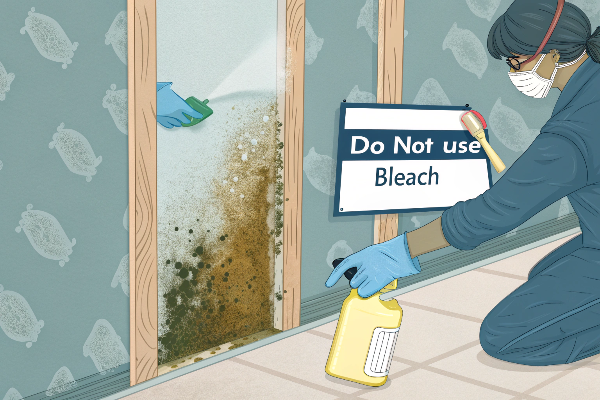
Bleach works by oxidation, which can kill surface mould effectively on things like shower tiles or bathtubs – these are non-porous surfaces. It cannot soak into materials that absorb water. Think about wood, drywall, carpet backing, or ceiling tiles. These are porous. When you apply bleach (which is mostly water) to these surfaces, the bleach chemical sits on top. It kills some surface mould and removes the visible colour. But the water component soaks into the material. This extra moisture can actually feed the mould hyphae2 (roots) embedded deep within, potentially making the problem worse over time. I remember trying to clean a mouldy wooden window frame with bleach once; the stain disappeared temporarily, but the mould came back thicker just a few weeks later. Plus, bleach releases strong fumes3 that can irritate your lungs and eyes. If it accidentally mixes with ammonia (found in urine or some cleaning products), it creates toxic chloramine gas.
Porous vs. Non-Porous Surfaces Explained
Understanding where mould grows is key.
- Non-Porous4: Glass, metals, hard plastics, glazed tiles. Bleach5 can kill surface mould here.
- Porous6: Wood, drywall, insulation, fabric, upholstery, unsealed grout. Bleach5 is ineffective here as it doesn’t penetrate.
The Problem with Bleach’s Water Content
Bleach is typically 90-95% water.
| Surface Type | Bleach Effect | Water Effect | Outcome |
|---|---|---|---|
| Non-Porous | Kills surface mould | Evaporates quickly | Often effective |
| Porous | Kills surface, removes colour | Soaks in, feeds hidden mould | Ineffective, risky |
Health Hazards
- Irritates skin, eyes, lungs.
- Can create toxic gas if mixed with ammonia.
- Doesn’t remove allergenic mould spores.
Is Bleach or Vinegar Better for Mould?
Staring at a mouldy spot, wondering whether bleach or vinegar is the better weapon? Making the wrong choice might mean the mould sticks around.
Vinegar is generally considered better and safer than bleach for tackling mould, especially on porous surfaces. Vinegar’s acidic nature kills mould down to the roots, while bleach often only removes surface stains and carries health risks.
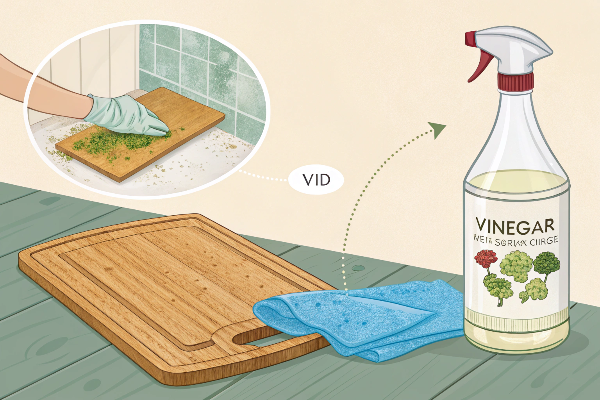
When I first encountered mould under a leaky sink, my first instinct, like many, was to grab the bleach. It looked clean afterwards. But the mould returned. Then I learned about vinegar. White distilled vinegar works differently. It’s an acid. This acidity is effective at breaking down the structure of mould and killing it right down to the roots, even on porous materials where bleach fails. Bleach is an oxidizer; great for stains and surface germs on hard surfaces, but not for penetrating porous materials to kill hidden mould. Vinegar doesn’t just hide the problem by removing the colour; it actually kills it. Plus, vinegar fumes, while pungent, are not nearly as harsh or dangerous as bleach fumes. For most household mould situations, especially those involving porous materials like wood or drywall, vinegar is the more effective and safer option.
How Bleach Works (Superficially)
Bleach uses sodium hypochlorite to oxidize and disinfect.
- Pros: Kills surface mould, removes stains quickly on non-porous surfaces.
- Cons: Doesn’t penetrate porous materials, water content feeds deeper mould, harsh fumes, damages materials over time.
How Vinegar Works (Deeper Kill)
Vinegar uses acetic acid to kill mould.
- Pros: Kills mould roots, effective on porous surfaces7, safer fumes8, inexpensive.
- Cons: Doesn’t remove stains as effectively, smell can linger (but dissipates), might damage sensitive surfaces like marble.
Bleach vs. Vinegar Comparison
| Feature | Bleach | Vinegar |
|---|---|---|
| Mechanism | Oxidation | Acidity |
| Surface Type | Best on Non-Porous | Good on Porous & Non-Porous |
| Kills Roots? | No (on porous) | Yes |
| Stain Removal | Excellent | Fair |
| Safety | Harsh fumes, skin irritant, toxic mixes | Pungent smell, generally safer |
| Cost | Inexpensive | Inexpensive |
What Kills 100% of Mold?
Tired of mould coming back? Are you searching for something that guarantees complete mould destruction? It’s a common frustration.
Honestly, no single household product reliably kills 100% of mould and its spores in every situation. For severe infestations, professional mould remediation, which often involves removing affected materials and using specialized biocides, offers the closest guarantee of complete removal.
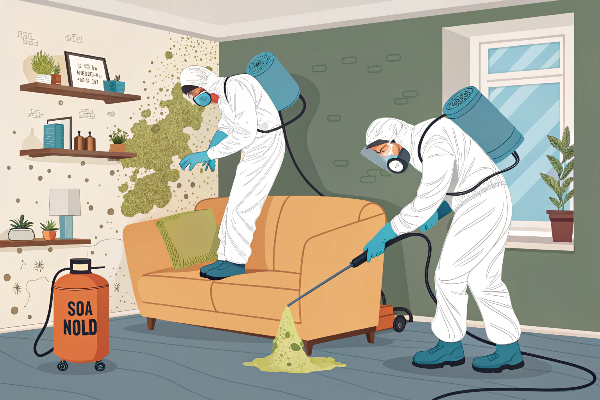
Achieving a 100% mould kill rate is incredibly challenging. Mould reproduces using microscopic spores that travel through the air and settle everywhere. Even if you kill the visible mould, spores might remain dormant, ready to grow when conditions become favourable again (usually when moisture returns). For small, surface-level mould on non-porous items, thorough cleaning with agents like vinegar or hydrogen peroxide can be very effective. However, if mould has penetrated deep into porous materials like drywall, wood studs, or insulation, simply treating the surface won’t eliminate it. Professionals use containment, negative air pressure, HEPA vacuuming, specialized antimicrobial treatments9, and often physically remove and replace contaminated materials. This comprehensive approach is the most reliable way to ensure complete removal. Remember my mouldy window frame? Even after trying different cleaners, the only permanent solution was replacing the affected wood. The absolute key is also fixing the moisture source that allowed mould to grow in the first place.
The Challenge of Spores and Hidden Growth
Mould isn’t just what you see.
- Spores10: Microscopic, airborne, resilient. Can survive cleaning attempts.
- Hidden Growth11: Mould often thrives inside walls, under floors, or above ceilings. Surface cleaning won’t reach it.
Approaches to Mould Removal
| Method | Description | Effectiveness | Best For |
|---|---|---|---|
| Household Cleaners | Vinegar, Hydrogen Peroxide, Tea Tree Oil solution | Variable, Surface Level | Small, non-porous or slightly porous areas |
| Bleach | Sodium Hypochlorite solution | Poor on porous, Good stains | Non-porous surfaces only (with caution) |
| Material Removal | Cutting out contaminated drywall, wood, carpet | High | Deeply ingrained mould in porous materials |
| Professional Remediation12 | Containment, air scrubbing, biocides, removal | Very High | Large infestations (>10 sq ft), hidden mould |
The Undeniable First Step
Regardless of the cleaning agent or method, you must fix the source of moisture. Without this, mould will always return.
Will Mold Grow Back After Bleaching?
You’ve scrubbed the mouldy area with bleach and it looks clean. But is the victory permanent, or will that fuzzy menace return?
Yes, mould very often grows back after bleaching, especially if it was on a porous surface like wood or drywall. Bleach doesn’t kill the underlying roots, and its water content can actually help the remaining mould regrow, particularly if the moisture problem13 isn’t fixed.
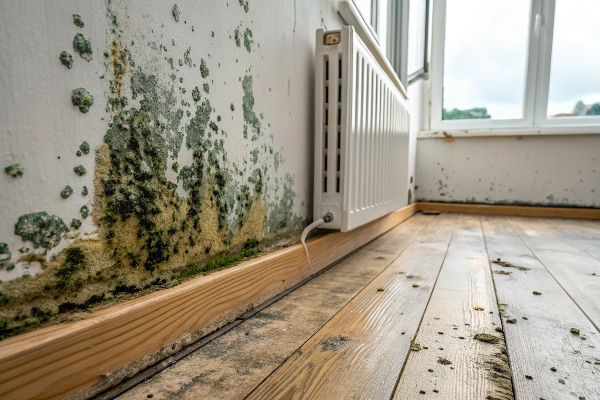
Think of mould like a weed. Bleach often just cuts off the visible top part but leaves the roots intact, especially in materials it can’t fully penetrate. I learned this the hard way dealing with some mould on drywall near a shower. The bleach made it vanish, and I thought I’d won. A month later, it was back, seemingly worse than before. The reason is twofold: first, the bleach didn’t kill the mould hyphae14 (roots) inside the drywall. Second, the water from the bleach solution provided extra moisture, giving those surviving roots a perfect environment to thrive once the chemical effect wore off. It basically gave the mould a drink! Unless you address the reason the mould grew there initially – the leak, condensation, or high humidity – and use a method that kills the roots, regrowth after bleaching is almost inevitable on porous surfaces.
Why Bleach Fails the Long-Term Test
Bleach’s limitations lead to regrowth:
- Surface Action Only15: Kills what’s on top, not what’s inside porous materials.
- Doesn’t Neutralize Spores16: Airborne spores remain and can restart growth.
- Water Feeds the Roots: The main component of bleach solution aids regrowth.
The Real Problem Isn’t Gone
| Bleach creates an illusion of clean by removing colour. | Factor | Before Bleaching | Immediately After Bleaching | Long Term After Bleaching (Porous) |
|---|---|---|---|---|
| Visible Mould | Yes (Coloured) | No (Bleached) | Yes (Regrown, Coloured) | |
| Mould Roots (Porous) | Yes | Yes | Yes (Potentially Larger) | |
| Moisture Source | Yes (Usually) | Yes (Often Worse) | Yes (Unless Fixed) |
Preventing Regrowth: The Essentials
- Fix the Moisture17: Stop leaks, improve ventilation, use dehumidifiers.
- Use Penetrating Cleaners: Vinegar or specialized mould removers for porous surfaces.
- Consider Removal: Replace contaminated porous materials if necessary.
Why Isn’t Vinegar Killing Mold?
You followed the advice, sprayed vinegar on the mould, let it sit, but the mould is still there or came back quickly. What went wrong?
Vinegar might fail to kill mould if it’s too diluted (use undiluted white vinegar18), not left to sit long enough (at least an hour), the mould strain19 is particularly resistant, or the underlying moisture issue20 allowing growth hasn’t been resolved.
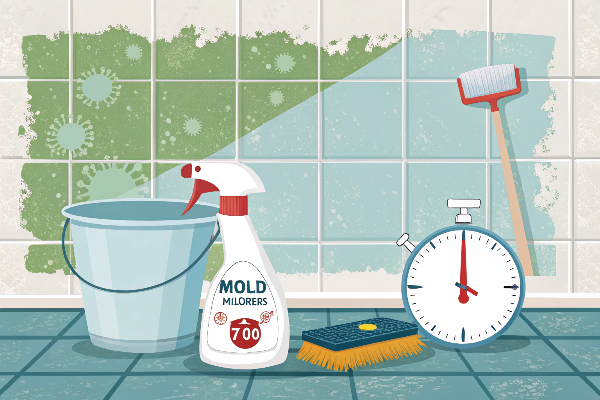
It can be really frustrating when a recommended solution like vinegar doesn’t seem to work. I experienced this once on some stubborn grout mould. I sprayed vinegar, waited maybe 20 minutes, and scrubbed, but it didn’t fully disappear. Later, I realized a few potential issues. First, I should have used undiluted white distilled vinegar (usually 5% acidity) – dilution weakens its power. Second, I didn’t leave it on long enough. Vinegar needs time, at least an hour, to penetrate and break down the mould structure, especially the roots. Third, some mould types might be more resistant than others. Finally, and most importantly, if the area stays damp (like my shower grout often did due to poor ventilation), even if the vinegar kills the mould, new spores will land and grow back quickly because the conditions are still perfect for them. Deeply embedded mould might also require scrubbing or even removal, as surface treatment alone might not be enough.
Factors Reducing Vinegar’s Effectiveness
- Dilution21: Using watered-down vinegar reduces acidity.
- Insufficient Dwell Time22: Not allowing at least 60 minutes for the vinegar to work.
- Poor Application: Not thoroughly saturating the mouldy area.
- Resistant Mould Strain: Some types might be tougher (though less common).
- Persistent Moisture23: The #1 reason for regrowth or apparent failure.
Troubleshooting Vinegar Application
| Problem | Potential Cause | Solution |
|---|---|---|
| Mould still visible | Short dwell time / Diluted vinegar | Use undiluted white vinegar, leave for 1+ hour, reapply if needed |
| Stain remains after kill | Vinegar kills, but doesn’t bleach | Scrub gently; for stains, try hydrogen peroxide after vinegar |
| Mould returns quickly | Underlying moisture not fixed | Fix leaks, improve ventilation, reduce humidity |
| Deeply ingrained mould | Surface treatment insufficient | Scrub vigorously, consider professional help or material removal |
Make sure you’re using plain white distilled vinegar, applying it generously with a spray bottle, giving it ample time, and most critically, addressing the dampness that invited the mould in the first place.
Conclusion
Bleach often isn’t the best mould killer, especially for porous surfaces or long-term results. Prioritize fixing moisture issues and consider safer, more effective root-killing alternatives like undiluted white vinegar.
-
Explore effective mould removal techniques specifically for porous materials to avoid worsening the problem. ↩
-
Understanding mould hyphae can help you choose the right removal strategies and prevent future infestations. ↩
-
Learn about the health risks associated with strong fumes to ensure safe cleaning practices in your home. ↩
-
Non-porous surfaces play a vital role in mould prevention. Discover their advantages and how to maintain them effectively. ↩
-
Bleach is commonly used for mould removal, but its effectiveness varies. Learn more about its impact on various surfaces. ↩ ↩
-
Understanding porous surfaces is crucial for effective mould prevention and treatment. Explore this link to learn more about their properties. ↩
-
Learn why vinegar is particularly effective on porous surfaces, ensuring thorough cleaning and mould removal. ↩
-
Discover the safety advantages of vinegar over bleach, especially regarding fumes and health risks. ↩
-
Discover the effectiveness of antimicrobial treatments in mould removal and how they can help in severe cases. ↩
-
Understanding spores is crucial for effective mould prevention and removal strategies. Explore this link to learn more. ↩
-
Identifying hidden mould is essential for comprehensive mould management. This resource will guide you in tackling hidden growth effectively. ↩
-
Professional remediation can be vital for severe mould issues. Discover the processes and benefits of hiring experts for mould removal. ↩
-
Addressing moisture issues is crucial for long-term mould prevention; explore solutions to keep your space dry and healthy. ↩
-
Learning about mould hyphae can provide insights into effective mould removal strategies and prevention techniques. ↩
-
Understanding the limitations of bleach can help you choose more effective cleaning methods for porous surfaces. ↩
-
Learn how bleach interacts with spores to better manage mould and prevent regrowth in your environment. ↩
-
Explore solutions to moisture problems, which are crucial for preventing mould regrowth and maintaining a healthy home. ↩
-
Explore this link to understand how undiluted white vinegar can effectively combat mold and improve your cleaning strategy. ↩
-
Learn about various mold strains and their resistance levels to vinegar, which can help you choose the right cleaning method. ↩
-
Discover effective solutions for addressing moisture problems that contribute to mold growth, ensuring long-term prevention. ↩
-
Understanding dilution’s impact can help you maximize vinegar’s cleaning power and avoid common mistakes. ↩
-
Learning about dwell time can enhance your cleaning techniques and ensure better results with vinegar. ↩
-
Exploring this topic can provide insights into preventing mould regrowth and improving your cleaning strategy. ↩



